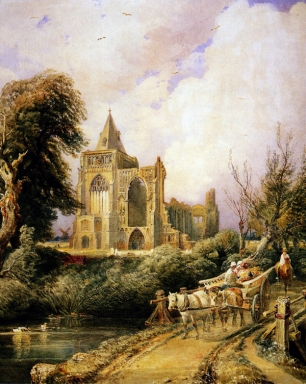About the Artist
Peter de Wint (1784-1849)
De Wint was introduced to Lincolnshire by fellow apprentice, friend and future brother in law William Hilton (1786-1839). In 1809 he became a student at the R.A. and the following year married Harriet Hilton. In 1814 De Wint bought some property near the south-west corner of Lincoln Castle at the junction of Drury Lane and Union Road, which was also occupied by Hilton when they were in Lincoln. With the exception of a visit to Normandy, his travels were confined to England and Wales.
In his landscapes, chiefly of river and harvesting scenes, he is very fond of the shallow broad panorama, often enclosed by sombre masses of woodland – he also uses a St Andrew’s cross composition. Trees are built up in several layers of superimposed blues and greens becoming darker in tone. There is much brown, green and orange in his work, but this may be due to fading, from which the drawing has often suffered badly. In particular, his skies are now often pink or non-existent.
Toward the end of his life, his style became freer, and the effect is closer to the sketchiness of his pencil drawings.


